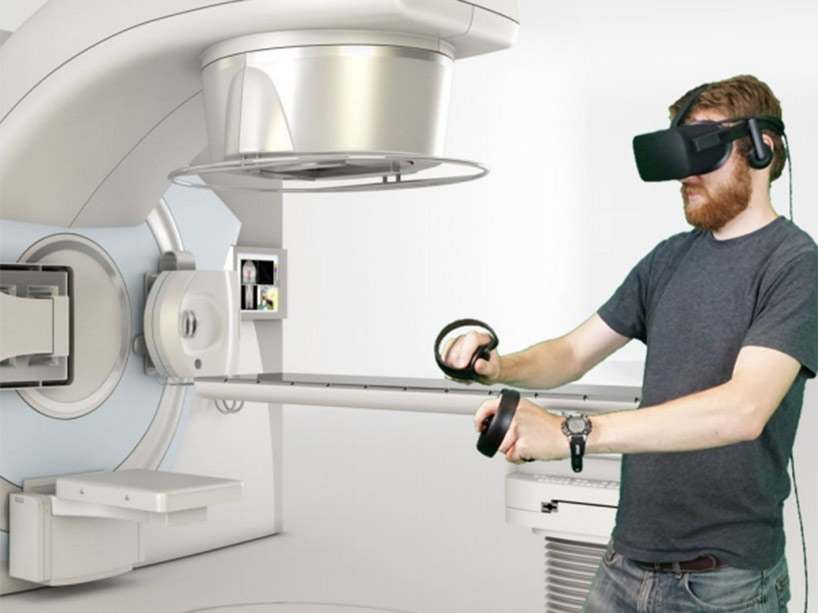Bringing virtual reality to classrooms

Jahan Tavakkoli worked with Arch Virtual to create VR hospital room demos to enhance the classroom experience for students in Biomedical Engineering and Physics programs.
With virtual classrooms becoming the norm in 2020/21, it’s no surprise that physics professor Jahan Tavakkoli has been running 3D virtual reality (VR) hospital room demos in his second year biomedical engineering course. What is surprising, however, is that Tavakkoli began the project several years ago.
“I was always thinking of adding an experiential learning component to this course, and I wanted to find a way to bring these high tech medical equipment to the classroom,” he says. “I had planned it for fall 2020 no matter what. It just so happened that it worked well with COVID-19 lockdown.”
Finding the right technology
This VR high-tech medical equipment was just an idea back in 2017 when Tavakkoli first approached the engineering and science departments at Ryerson for funding. After getting their support, he put together a proposal for the project and started researching suppliers who could deliver on his vision.
“I came across Arch Virtual, a company based in the U.S. – they are experts in making VR medical equipment and applications,” he explains. “They have access to databases of actual models so they can reconstruct actual equipment.”
Traditionally, biomedical engineering and biomedical physics students receive equipment demos and training on-site at the hospitals as part of their education. “That option has become increasingly challenging. From finding the hospital time, to the cost and logistics of the visit.”
Over the next few years, Tavakkoli worked closely with Arch Virtual to develop technology that allows students to visualize and interact with a range of medical devices. Using this new VR application, students can enter one of four virtual hospital rooms and virtually operate an MRI, X-ray, ultrasound or a LINAC device (a medical linear accelerator used to give radiation treatment to cancer patients).
“They start simulating simple imaging and treatment scenarios and it gives them a fairly realistic experience of what happens with these devices in the hospital.”
This VR Medical Imaging and Treatment Experience allows students to visualize, interact with, and learn more about a variety of medical devices.
Going virtual virtually
In an in-person setting, students would use a VR headset and hand controllers to interact with the simulation. Since classes were shifted online, however, the simulation was shown to students over Zoom.
Technical officer Graham Ferrier, a colleague of Tavakkoli’s in the Department of Physics, was invited to his online classes to perform the demos. Using the VR headset and controllers, Ferrier navigated the demo while sharing his screen with students so they could experience what he was seeing.
While the imaging and treatment scenarios were being conducted, voice narration described each method and the results of each procedure. Each scenario could be viewed at any angle/location and replayed as necessary. Animated individuals simulated the patient’s role in each scenario and positioning within the medical device.
These virtual hospital rooms are currently being used in two biomedical physics courses offered by the Department of Physics: BME229 and PCS229 – which cover main applications of physics in medicine – and Tavakkoli plans to add or adapt this VR application for other courses, as well. He also plans to add more virtual hospital rooms and additional equipment to the application.
“Once we get back on campus, the plan is to have one or two VR stations for students to use while in class.”
Student experience
According to a course survey of students, feedback has been overwhelmingly positive; some had no previous experience with these devices and appreciated seeding them in action – albeit virtually.
Second-year biomedical engineering student Renée Berahzer appreciated that Tavakkoli used the VR demos as part of his teaching, finding them creative and innovative.
“The VR experience allowed me to visualize how these imaging and therapy devices are used in medical applications,” she says. “Reading about them is one thing, but I think it’s beneficial to visualize how they carry out the imaging and therapy processes.”





